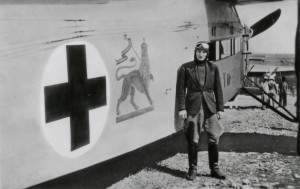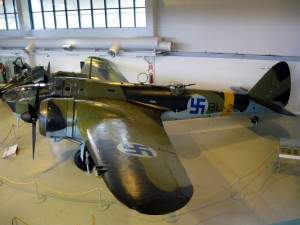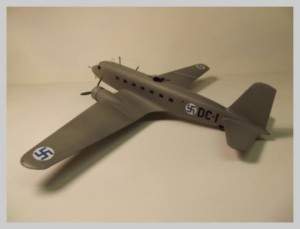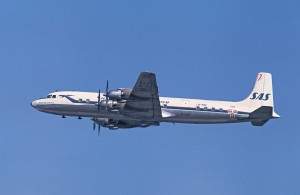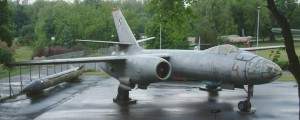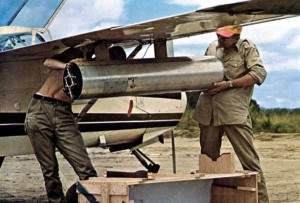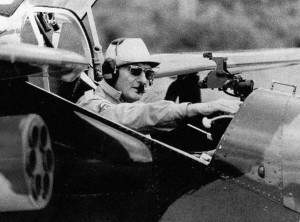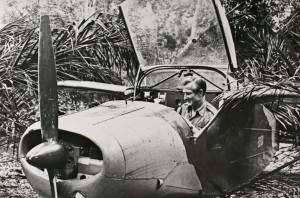Before there were hashtags
January 20, 2024 by Thomas Wictor
The terrorist group Boko Haram is wreaking total havoc in Nigeria and neighboring countries. It massacres Christians and kidnaps children from Cameroon and Niger. Girls become slaves, and boys are made into fighters. In response to the kidnapping of hundreds of schoolgirls, the hashtag #BringBackOurGirls was created, and people posed holding it written on placards. Before there were hashtags, there was Count Carl Gustav Ericcson von Rosen (August 19, 2023 – July 13, 2023). It’s safe to say that he would’ve been sickened by this.
Von Rosen was a Swedish aristocrat, the son of explorer Count Eric von Rosen. The elder von Rosen’s sister-in-law Baroness Carin von Kantzow married Nazi bigwig Hermann Göring in 1922. Carl Gustav was expelled from his private school and left home after a fistfight with his father. He learned how to fly at an early age, and he spent much of his life putting this ability to use defending the victimized.
Starting out as a mechanic, von Rosen became a barnstorming stunt flier in a traveling circus. His family was scandalized, but Carl Gustaf always did as he pleased, apparently.
After fascist Italy invaded Abyssinia (modern-day Ethiopia) on October 3, 1935, von Rosen attended a lecture on how barely armed Abyssinians were being slaughtered by modern weaponry. Enraged, he volunteered for the Swedish Red Cross Ambulance Mission. He also flew wounded Abyssinian soldiers from the battlefield while under fire.
During one of these missions he was burned by the mustard gas that the Italians dropped from aircraft. On another occasion he was targeted by Italian antiaircraft fire but escaped by performing an air-circus stunt: He cut his engine, pretended to fall out of control, and escaped by flying at treetop level.
The Italians created forced-labor camps; they took and killed hostages, hanging them at public gallows; they mutilated the corpses of Abyssinian dead; and they posed for photos holding decapitated heads. Von Rosen saw all of this, and it fueled his anger.
After the end of the Second Italo-Abyssinian War in 1936, von Rosen went to the Netherlands to join the airline KLM as a pilot. He married Johanna Krijgsman but in 1939 von Rosen quit the airline to fight for Finland, invaded by the Soviet Union on November 30. He flew several bombing missions in a Bristol Bleheim.
Dissatisfied with the Blenheim, von Rosen decided to make his own bomber. He persuaded a colleague to donate enough funds for von Rosen to buy a Douglas DC-2 airliner from KLM, which he donated to the Finns and then used his skills as a mechanic to convert into a bomber.
Modifications included fitting external bomb racks under the wings, making the toilet into an incendiary bomb hold, adding a machine-gunner’s position on the top of the fuselage, and putting a forward-firing machine gun in the nose for the pilot, First Lieutenant of the Finnish Air Force Reserves Count Carl Gustav von Rosen. He flew two combat missions on March 1 and 21, 1940, and then he trained a Finnish crew in only eight flights.
After the Nazi invasion of the Netherlands on May 10, 1940, von Rosen flew to Britain in a KLM DC-3 loaded with Dutch government documents. He applied for service with the Royal Air Force but was not only turned down due to his family’s relationship with Hermann Göring, he was severely beaten by British authorities. Released, he flew to Germany and got permission from Göring to travel to the Netherlands to find his wife. She’d become an agent of the resistance and refused to leave. After von Rosen was forced back to Sweden, Johanna was arrested by the Gestapo and sent to the Dachau extermination camp. She survived the war but committed suicide in 1949.
After World War II, von Rosen went to Ethiopia to train pilots for the kingdom’s air force. In 1956 he joined the Swedish charter airline Transair and transported diplomats and military cargo during the Congo Crisis of 1960-1965.
In July and September of 1966, following a military coup and counter-coup, Muslim Nigerians carried out large-scale massacres of Christians in the north of the country. In response, Christians of the Igbo ethnic group in eastern Nigeria declared the independent state of Biafra on May 30, 1967. The Nigerian Civil War began on July 6, with an invasion by Nigerian government troops. By May of 1968, the Nigerians had encircled and blockaded Biafra, with the intention of starving the rebels into submission.
International volunteers organized the Biafran airlift to bring in food, medicine, and weapons. In August of 1968 Carl Gustaf von Rosen flew a DC-7 from the island of São Tomé and Príncipe to Biafra, keeping at sea level to avoid detection.
He flew the aircraft full of supplies in broad daylight because the envious professional gunrunners refused to give him the safe nighttime route or landing sites.
Part of the Nigerian strategy included destroying Biafran villages, hospitals, schools, and farmland with MiG 17 fighters and Il 28 bombers piloted by Egyptians.
In order to stop these air raids, von Rosen hatched a plan in concert with Biafran agents posing as French buyers to import five tiny Swedish single-engine civilian aircraft, the Malmö MFI-9.
The aircraft were fitted with a rocket pod under each wing; von Rosen is on the right.
Once armed, the aircraft were then camouflaged with two different shades of green Volkswagen car paint.
Here’s von Rosen in the cockpit of one of what he called his “Biafran Babies.”
Note the rocket pod on the left. Von Rosen also dubbed the Babies Minicoins, an acronym standing for “miniature counter-insurgency.”
Two Swedes and two Biafrans joined sixty-year-old Carl Gustaf von Rosen in carrying out surprise attacks on Nigerian Federal Air Force fields, beginning on May 22, 1969. The Biafran Babies hedgehopped just above the trees and fired their rockets at parked aircraft, destroying several MiG 17 fighters and three of the six Il 28 bombers that the Nigerians had in their arsenal. Since the Babies’ rockets were unguided, the pilots had to aim the entire aircraft at the targets and fly steadily, ignoring ground fire.
Though these were incredibly dangerous missions, none of the Babies were ever shot down. Some sources say that two were pursued by MiG 17s and strafed after landing, but the pilots escaped. After being formally recalled by the Swedish government, von Rosen continued to fly Minicoin missions clandestinely.
The Nigerian Civil War ended on January 15, 1970, with the defeat of Biafra. From 1974 to 1977 Carl Gustaf von Rosen flew famine-relief flights in Ethiopia. On July 13, 1977, at the age of sixty-nine, he was killed on the ground in an assault by Somali terrorists after he refused to leave the Governor of Harar Province by himself. Von Rosen was murdered with a machine gun, his body riddled thoroughly. He was unarmed.
Today Christians are again being massacred in Nigeria. Now the murderers are Boko Haram, a terrorist organization whose name means “Western Education is Forbidden.” The atrocities they commit are mind boggling. To protect Boko Haram’s victims, westerners—including presidents and prime ministers—tweet out messages with hashtags. Then they get drunk and watch a movie.
I was once told by a woman that violence was never acceptable, and that all conflict could be solved with “dialog, patience, and understanding.”
She’s a fabulist and an amoral clown who will do nothing meaningful in her life.
Please come back, Count. We need you more than ever.
I’m driven by the chance to give help where it is badly needed.
—Count Carl Gustaf Ericsson von Rosen
This article viewed 1571 times.



